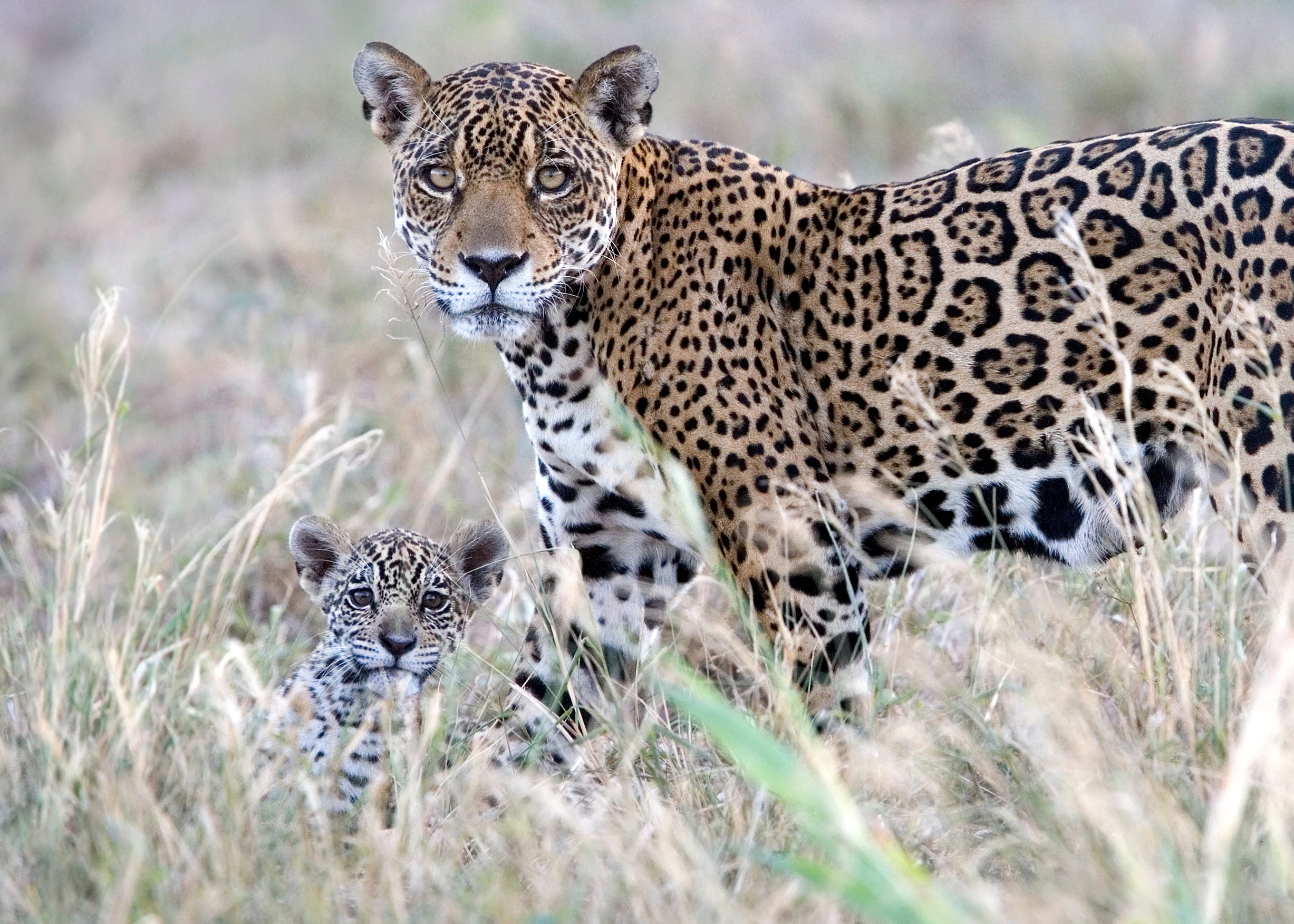
Wildlife photographer Daniel Alarcon set out to create the National Parks of Bolivia book with his wife, Carmen Mateu, but despite their efforts in tracking footprints, they never captured the camera-shy jaguar. Despite placing camera traps and using other gadgets recommended by biologists, five years passed without capturing a photograph of the creature.
Carmen convinced Daniel to make one last attempt at photographing one, in the Kaa Iya del Gran Chaco National Park. More than a week passed without success. But on the 10th day, the photographers received a radio update from a park ranger, telling them there was a male jaguar sighting at the opposite end of the park.
After a whole day of travelling, Daniel and Carmen arrived at the location of the sighting. They never found the male, but, in the last rays of light, a female jaguar and her cub appeared before them and, at last, they were able to capture some photos. The majestic female was later named Kaaiyana.



The jaguar species once ranged from the southwestern US through to the Amazon basin, to the Rio Negro in Argentina, but the big cat now occupies around half of this area. If humans protect jaguars, they protect so much more. Forty-six million people benefit from water provisions within the range of jaguars, and 38 million people benefit from the natural hazard mitigation that their habitats provide, such as protection against floods, droughts and landslides, and providing coastal defence.
“The story of these images of jaguar with cubs is a love story […]. To Kaaiyana, my sincere thanks for giving me some of the best nature viewing moments of my life.”
The sighting of jaguars in Bolivia’s Kaa Iya is a strong indicator that the conservation measures in the national park are going well. WWF-Bolivia is working in Kaa Iya during the forest fire season to provide equipment to firefighters.
You can find out more about WWF’s conservation work in jaguar landscapes and beyond here







